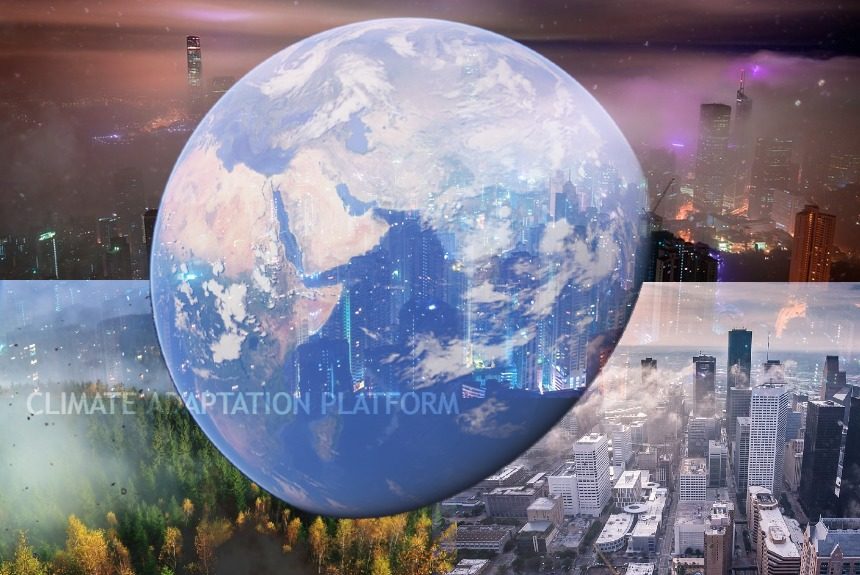Despite efforts to report on the risks of climate change, a communication gap persists. This gap between the scientific and public understanding of climate change is referred to as the “Consensus Gap” and is attributed to a failure in climate change communication.
As history has repeatedly shown, data and facts alone cannot inspire behavioural change, and understanding science does not necessarily mean accepting climate change.
So, the question is, what can motivate people to change their behaviour and address climate change?
A growing body of research shows that visualisation or creating a mental image of the problem can effectively motivate behaviour change.
Climate change news bombards us almost every day – extreme climate events worldwide, leaders talking about how to tackle the problem, vulnerable countries asking for assistance to cope with climate change effects, and humanitarian and environmental groups demanding changes.
The 2021 IPCC report presents a big challenge for everyone on our planet. It indicates that we are perilously close to exceeding 1.5°C, the global warming limit that parties agreed upon during the Paris Agreement in 2015.
At 2°C of global warming, heat extremes are more likely to reach critical tolerance thresholds for agriculture and health. But it won’t just be about temperature. Still, it will also affect the water cycle, and rainfall patterns, as well as permafrost thawing, glacier and ice sheet melting, droughts, and extreme events, which will become more frequent.
But what the 1.5°C or 2°C warming looks like is sometimes hard for people to imagine or envision or how it might affect their daily lives.
A study to help people visualise climate change evaluates the climate shifts in major cities worldwide, all 520 (Current Cities). It projects what they will most closely resemble in terms of climate conditions in 2050 (Future Cities).
The study tested three questions:
- (1) What proportion of the world’s major cities of the future most closely resemble their current climate conditions vs. the climate conditions of other cities in different geographic regions?
- (2) What proportion of cities will experience novel climate conditions that are outside the range experienced by cities today?
- (3) If cities do shift their climate conditions, is this spatial shift uniform in direction across the planet?
The study’s findings show that even under an optimistic climate scenario (RCP 4.5), researchers find that 77% of future cities will experience a climate that resembles that of another existing city than their current one. Twenty-two per cent of cities will experience a new or novel climate condition, or one that has not been experienced in any existing city.
Across the globe, climate shifts are trending towards the subtropics. Cities in the Northern Hemisphere will shift to warmer conditions, while cities in the tropics will experience drier conditions. To visualise changes in the climate conditions of future cities, researchers use the current climates of some cities.
For example, they predict that Madrid’s climate in 2050 will resemble Marrakech’s climate today, Stockholm will resemble Budapest, London will resemble Barcelona, Moscow will resemble Sofia, Seattle will resemble San Francisco, Tokyo will resemble Changsha, and so on.
According to the researchers, these city parallels and the study’s data can help land managers and city planners visualise the climate futures of their respective cities, facilitating effective decision-making in response to ongoing climate change.
The Crowther Lab’s tweet features an infographic that provides further details.
The Crowther Lab has created an interactive map of cities that shows future shifts in climate conditions. Click the button below to view:
To read the study, click on the link below:
Sources:
Bastin, JF, Clark E., Elliot, T., Hart, S. van den Hoogen, J., et al. (2019) Understanding climate change from a global analysis of city analogues. PLOS ONE. Retrieved from https://journals.plos.org/plosone/article?id=10.1371/journal.pone.0217592
Cities of the future: visualising climate change to inspire action. Crowther Lab. Retrieved from https://crowtherlab.pageflow.io/cities-of-the-future-visualizing-climate-change-to-inspire-action#210424
IPCC report: ‘Code red’ for human-driven global heating, warns UN Chief. (2021, August 9). UN News. Retrieved from https://news.un.org/en/story/2021/08/1097362



Leave a Reply